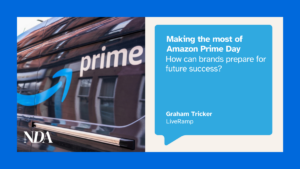By Craig Smith, UK Country Manager at SCAYLE
How we experience online shopping will never be the same. Consumers already have access to next day delivery, free shipping and returns, competitive prices and discount codes, and more choice than ever before. But it’s about to get even easier to shop online thanks to the explosion of generative AI.
Analysts have projected that AI-enabled commerce will be a $16.8 billion market by 2030. With the ability to process huge amounts of customer data more quickly and accurately than ever before, a much more personalised shopping experience is on the horizon, something every retailer should be striving for. This will lead to a seismic shift in the way brands and retailers acquire customers, perhaps similar in magnitude to what digital did to TV and print.
From searching to conversing: changes in customer interactions
Despite the ease and accessibility of online shopping, trust is the one factor that can’t compete with in-store, with many consumers missing the trusted human interactions with product experts when they shop on the high street. This is especially important when making a large or expensive purchase.
Let’s walk through the customer journey of purchasing a mobile phone. A customer will typically walk into a phone store with a price range and general spec in mind, and approach a technical expert to run their questions past and seek comparisons from, in order to then make an informed decision. The online equivalent requires the customer to manually research, review and compare each phone’s spec, price and contract before they make their purchase, which is burdensome and time-consuming.
AI. For example, this enables customers to ask a chatbot sophisticated questions and advice about a particular product, and the tool will search the database using a large language model (LLM) and provide a sophisticated recommendation within seconds. While online retailers have been implementing basic chatbots for years now to answer FAQs, the new generation of AI-powered chatbots can tap into the assortment of an entire marketplace (something a store manager could never master) and provide personalised answers just as a human would through natural language processing technology. Customers will no longer have to deal with frustrating multiple choice options when trying to get their questions answered.
One of the biggest perks but also challenges to online shopping is the overwhelming amount of product choice there is on sites, and it’s been proven that ‘decision overload’ is a big driver of search abandonment. AI-powered chatbots will also help to reduce this. By asking for a product recommendation based on their requirements, a customer needn’t search through endless pages for the perfect product or even know what attributes they need to be looking for. Instead, the bot will recommend the best option based on their specific needs, making the search and decision making process a whole lot easier for the customer. This will lead to stronger conversation rates for brands as their customers can be more focused when they shop and less likely to abandon their search.
Increased personalisation
It’s not just the nature of customer interactions that are changing thanks to generative AI, but the depth and insight of these interactions. LLM-powered tools have the capability to analyse datasets on a scale like never before to understand a customer’s online profile, spot patterns around their purchase and abandonment rates, and personalise the shopping experience accordingly. Integrating these tools will enable brands to predict purchase intent and suggest highly-targeted products and promotions as they browse through the website.
This same logic can be applied to personalised retargeting. Generative AI can be used to craft tailored content such as highly targeted ads and marketing emails based on their shopping behaviour. Since Covid, there’s been a noticeable shift of CPG advertising dollars from traditional advertising to retail media networks, as brands are seeing increasing success rates from targeting customers inside the shopping funnel because they have so much more information on the customer and their intent.
The advent of AI spells an exciting time for ecommerce. Consumers have always wanted the best of both worlds when it comes to shopping and brands have long struggled to strike this balance and replicate the in-store experience online. All signs point to generative AI finally having the answer.









